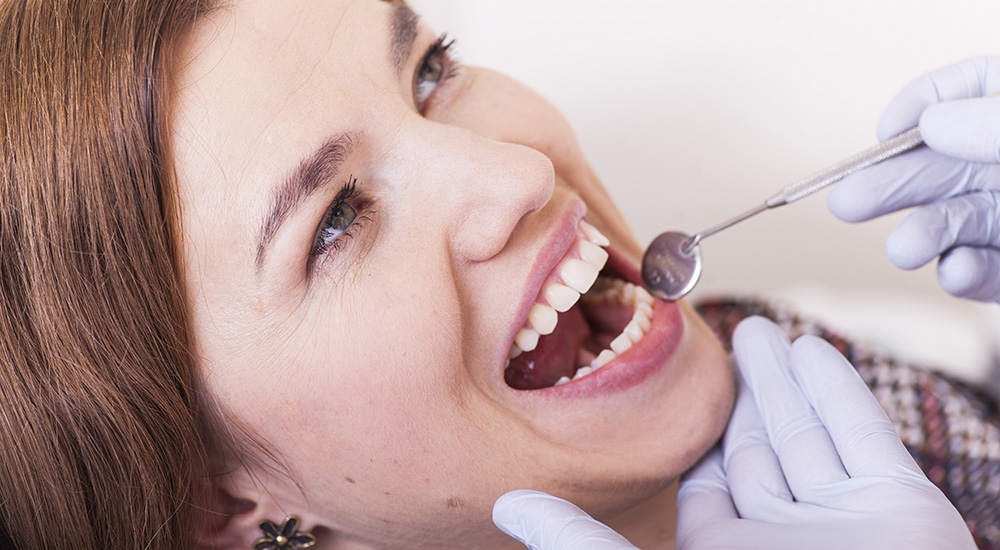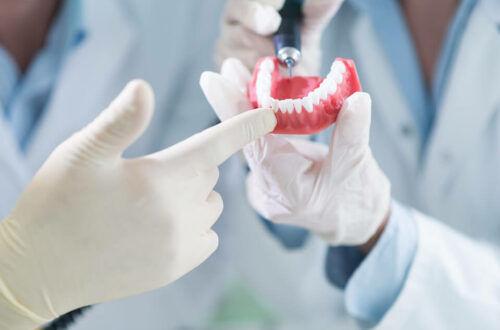
The Future of Tooth Replacement. Exploring the Advancements in Dental Implants and Prosthetics
In the world of dentistry, the future is bright with endless possibilities. Gone are the days of uncomfortable dentures and unreliable tooth replacements. Today, we delve into the exciting advancements in dental implants and prosthetics that are revolutionizing the way we restore smiles. With cutting-edge technology and meticulous craftsmanship, dental professionals are now able to offer patients a level of comfort, functionality, and aesthetics that were once unimaginable. From 3D-printed implants to innovative materials that mimic natural teeth, the future of tooth replacement is here, and it’s changing lives. Join us as we embark on a journey to explore the latest breakthroughs in dental implantology, uncover the benefits they bring, and discover how they are transforming the lives of countless individuals. Get ready to envision a future where a beautiful and functional smile is within reach for everyone. Welcome to the future of tooth replacement.
Do you dream of a new, beautiful smile? A perfect solution will be the reconstruction of teeth with the use of the Poznan prosthesis service. Qualified specialists from the Stankowscy-Białach dental clinic will do it for you!
The History of Tooth Replacement
Tooth loss has been a problem faced by humans for centuries. Throughout history, various methods have been used to replace missing teeth, ranging from animal teeth and seashells to more advanced solutions like dentures and bridges. The desire for a functional and aesthetically pleasing solution to tooth loss has driven the advancements we see today in dental implants and prosthetics. However, it wasn’t until the 20th century that dental implants truly began to take shape.
In the 1950s, a Swedish orthopedic surgeon named Dr. Per-Ingvar Brånemark made a groundbreaking discovery. He found that titanium had the unique ability to fuse with bone, a process he coined as osseointegration. This discovery laid the foundation for modern dental implantology. Dr. Brånemark’s research and subsequent clinical trials led to the development of the first successful dental implant in the 1960s. Since then, dental implants have undergone significant advancements, making them the gold standard for tooth replacement today.
The Limitations of Traditional Dentures and Bridges
Before the advent of dental implants, traditional dentures and bridges were the go-to solutions for replacing missing teeth. While these methods provided some level of functionality and aesthetics, they came with their fair share of limitations. Dentures, for example, often caused discomfort, restricted the ability to eat certain foods, and required regular maintenance. Additionally, dentures could become loose over time, leading to embarrassing moments and a lack of confidence in social situations. Bridges, on the other hand, required the support of adjacent teeth, which often necessitated the removal of healthy tooth structure. These drawbacks highlighted the need for a more reliable and long-lasting solution.
The Emergence of Dental Implants as a Game-Changer in Tooth Replacement
Dental implants have emerged as a game-changer in the field of tooth replacement. Unlike dentures and bridges, implants offer a permanent and secure solution that mimics the look, feel, and function of natural teeth. This is made possible by the process of osseointegration, where the implant fuses with the jawbone, creating a strong foundation for a prosthetic tooth.
The implant itself is a small, screw-shaped post usually made of titanium. It is surgically placed into the jawbone, where it integrates with the surrounding bone tissue over time. Once the implant has fully integrated, a prosthetic tooth, known as a crown, is attached to the implant, completing the restoration. Dental implants can be used to replace a single tooth, multiple teeth, or even support full arches of teeth.
Understanding the Different Types of Dental Implants
Dental implants come in various types, each designed to address specific tooth replacement needs. The most common types include endosteal implants, subperiosteal implants, and zygomatic implants.
Endosteal implants are the most widely used type of dental implant. These implants are placed directly into the jawbone, making them a suitable option for patients with sufficient bone density. Endosteal implants can support individual crowns, bridges, or even dentures, depending on the patient’s needs.
Subperiosteal implants, on the other hand, are placed on top of the jawbone but beneath the gum tissue. These implants are typically used when there is insufficient bone height or density to support endosteal implants. Subperiosteal implants consist of a metal frame that rests on the jawbone and protrudes through the gum tissue, allowing for the attachment of prosthetic teeth.
Zygomatic implants are a specialized type of implant used in cases where there is severe bone loss in the upper jaw. Instead of being placed in the jawbone, zygomatic implants are anchored in the cheekbone (zygoma). This unique placement provides a stable foundation for prosthetic teeth, even in challenging cases where traditional implants are not feasible.
Advancements in Dental Implant Technology
Over the years, dental implant technology has seen remarkable advancements, further enhancing the success and longevity of implant treatments. One of the key advancements is the development of computer-guided implant placement. This technology allows dentists to precisely plan the implant placement using 3D imaging and virtual surgical guides. Computer-guided implant placement improves accuracy, reduces the risk of complications, and enhances patient comfort during the procedure.
Another significant advancement is the introduction of immediate implant placement and loading. Traditionally, dental implants required a healing period of several months before the placement of a prosthetic tooth. However, with immediate implant placement and loading, patients can leave the dental office with a temporary crown attached to the implant on the same day of surgery. This technique not only provides immediate aesthetic benefits but also helps preserve the surrounding bone and soft tissue, leading to better long-term outcomes.
The Role of 3D Printing in Dental Prosthetics
3D printing technology has revolutionized various industries, and dentistry is no exception. In the field of dental prosthetics, 3D printing has opened up new possibilities for creating highly accurate and customized implant components. 3D printing allows dental professionals to fabricate intricate structures, such as implant abutments and surgical guides, with unprecedented precision.
The process begins with a digital scan or impression of the patient’s mouth, which is then converted into a 3D model. This digital model serves as the blueprint for creating the physical implant components using a 3D printer. The ability to produce custom-made implant components in-house significantly reduces the turnaround time, making the entire implant treatment process more efficient and convenient for patients.
Furthermore, 3D printing enables the use of innovative materials in dental prosthetics. For example, dental implants can now be manufactured using biocompatible materials, such as zirconia, that closely resemble the strength and appearance of natural teeth. These advancements in materials, combined with the precision of 3D printing, result in prosthetic teeth that are not only functional but also indistinguishable from natural teeth.
The Benefits of Dental Implants over Traditional Options
Dental implants offer numerous advantages over traditional tooth replacement options, making them the preferred choice for both patients and dental professionals. First and foremost, dental implants provide a permanent solution to tooth loss. Unlike dentures and bridges that may need to be replaced or adjusted over time, dental implants can last a lifetime with proper care.
Another significant benefit is the preservation of bone and facial structure. When a tooth is lost, the surrounding bone begins to deteriorate over time, leading to sunken facial features and an aged appearance. Dental implants help stimulate the jawbone, preventing bone loss and maintaining the natural contours of the face.
Furthermore, dental implants restore full chewing function, allowing patients to enjoy a wide range of foods without restrictions. Unlike dentures, which can slip or cause discomfort while eating, dental implants provide a secure and stable foundation for chewing. This improves overall nutrition and enhances the quality of life for individuals with missing teeth.
In terms of aesthetics, dental implants offer unparalleled natural-looking results. The prosthetic teeth are carefully crafted to match the color, shape, and size of the patient’s existing teeth, creating a seamless and harmonious smile. The improved confidence and self-esteem that come with a beautiful smile cannot be overstated.
Common Misconceptions about Dental Implants
Despite the numerous benefits and advancements in dental implantology, there are still some common misconceptions that surround this tooth replacement option. One common misconception is that dental implants are painful. In reality, the placement of dental implants is usually performed under local anesthesia, ensuring a comfortable and pain-free experience for the patient. Mild discomfort and swelling may be experienced during the healing process, but this can be managed with pain medication prescribed by the dentist.
Another misconception is that dental implants are prohibitively expensive. While dental implants may require a higher upfront investment compared to traditional options, they offer long-term value and cost savings. Dental implants eliminate the need for frequent replacements or repairs associated with dentures and bridges, making them a cost-effective choice in the long run.
Furthermore, some individuals believe that dental implants are not suitable for everyone. While it is true that certain factors, such as overall health and bone density, can affect the success of dental implant treatment, advancements in implant technology have expanded the eligibility criteria. Today, dental implants can be successfully placed in the majority of patients with proper evaluation and treatment planning.
The Future of Dental Implants and Prosthetics
As technology continues to advance, the future of dental implants and prosthetics holds even more promise. One area of ongoing research is the development of bioactive implants. These implants are designed to not only replace missing teeth but also promote tissue regeneration and integration with the surrounding structures. Bioactive implants have the potential to revolutionize the field of dental implantology by further enhancing the natural healing process and improving long-term outcomes.
Additionally, virtual reality (VR) and augmented reality (AR) technologies are being explored to enhance the planning and placement of dental implants. By overlaying digital information onto the patient’s anatomy in real-time, dentists can visualize the implant placement with unprecedented accuracy. This technology has the potential to improve the precision and predictability of implant treatments, further optimizing patient outcomes.
The future also holds the promise of regenerative medicine in dental implantology. Scientists are exploring the use of stem cells and tissue engineering to regenerate lost or damaged dental tissues, such as gum tissue and periodontal ligaments. This could potentially eliminate the need for traditional prosthetic materials and provide a more natural and biocompatible solution to tooth replacement.
Conclusion
The future of tooth replacement is bright, thanks to the advancements in dental implants and prosthetics. From their humble beginnings in the 1960s to the cutting-edge technologies of today, dental implants have come a long way in revolutionizing the field of dentistry. With the ability to restore smiles with unprecedented comfort, functionality, and aesthetics, dental implants have transformed the lives of countless individuals. The benefits they offer over traditional options, coupled with ongoing advancements in technology, ensure that the future of tooth replacement holds even more exciting possibilities. As we envision a future where a beautiful and functional smile is within reach for everyone, it’s clear that dental implants are at the forefront of dental innovation. Embrace the future of tooth replacement and unlock the potential for a lifetime of confident smiles.



